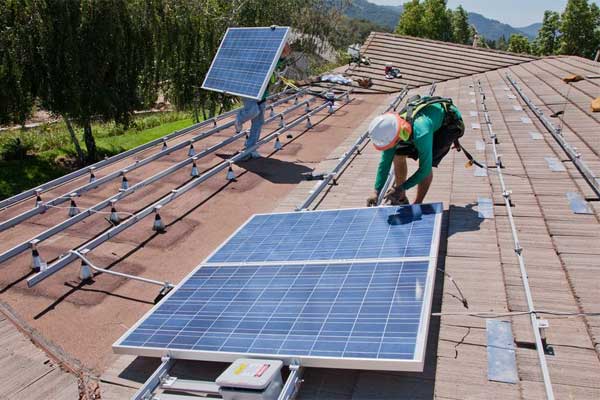California’s newly proposed net energy metering tariffs (NEM 3.0) would severely reduce residential solar’s value proposition, according to Wood Mackenzie’s new forecast scenario. The analysis shows that the California residential market would be cut in half by 2024.
The final changes to the state’s net energy metering tariffs (NEM 3.0) are very much in flux – an alternate Proposed Decision (PD) could be put forward, and implementation timelines remain uncertain. But the final regulations will have major implications for the US distributed solar industry.
Bryan White, research analyst and co-author of the report, said: “Under the terms of the latest PD, NEM 3.0 rates would more than double solar project payback periods. Both the new monthly fixed charges and the lower export rates will reduce economic attractiveness.
“Our analysis for the two largest utilities – Pacific Gas & Electric (PG&E) and Southern California Edison (SCE) – reveals payback periods for typical residential solar projects built this year will increase from five to six years under current net metering to 14-15 years, depending on the utility.
“For both utilities, the payback periods under NEM 3.0 go way beyond the 10-year threshold. Beyond this threshold, customers are less inclined to invest in solar projects and installers are less motivated to sell them.”
White added that the current PD would result in more than 2.4 GWdc of demand destruction in California’s residential solar market through 2026.
This represents a 36% reduction compared to Wood Mackenzie’s forecast in the US Solar Market Insight Q4 2021 report, which had already taken modest impacts from NEM 3.0 into account. Ultimately, the residential market shrinks to half its current size by 2024.
White said: “The provisions of the PD are more drastic than the industry anticipated. Less attractive project economics will surely discourage some homeowners from investing in solar.
“Energy storage and financial products offer modest hedges against NEM 3.0 but will not yield sufficiently attractive economics to maintain residential solar market growth in California. Installers will most likely need to sell much smaller solar projects to achieve savings for customers. This will put immense pressure on project margins as installers collect less revenue to cover fixed costs.”
Near-term deployments will depend partly on when the California Public Utilities Commission comes to a final decision and implements NEM 3.0. Wood Mackenzie currently assumes that the PD, if approved, will start impacting installations in July or August of this year.
As a result, installers will spend the first half of the year selling as many residential solar systems as possible, rushing to submit interconnection applications under NEM 2.0 rates. This will lead to record quarters of capacity additions for the California market before activity drops in the second half of the year.
White said: “Next year’s deployments will be hit by the stepdown of the investment tax credit (ITC). Wood Mackenzie expects modest demand pull-in at the end of 2023 before the credit fully expires for customer-owned systems and falls to 10% for TPO systems in 2024 (under current law).
“Despite this, installed capacity for the entire state will decline by 42% year-on-year in 2023 – the first full year of NEM 3.0. This will be driven by a 53% decline in installed capacity in investor-owned utility territories impacted by the new program.”
Market decline will continue in 2024, with annual residential installed capacity in 2024 expected to fall to just over 700 MWdc – roughly half of 2021 volumes, and the lowest annual output for California since 2014. The market will return to single digit growth in 2025 and 2026 as it begins a modest recovery. Solar and storage system price declines will provide some relief to industry players after a few tough years.
White added: “Ultimately, the NEM 3.0 PD and the ITC stepdown will create a challenging business environment in the near- to mid-term. Many solar companies will not survive this double whammy of policy headwinds, resulting in significant consolidation in a contracting California residential solar market.”
—
Comment by Wood Mackenzie, a Verisk business, based on its new forecast scenario for the California residential market.











Comments